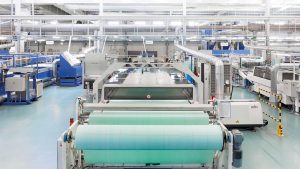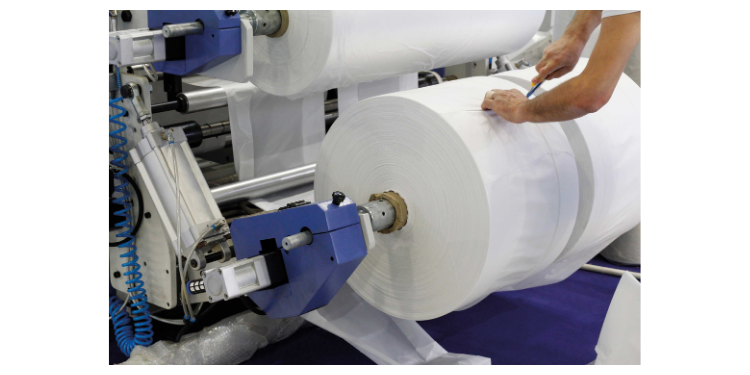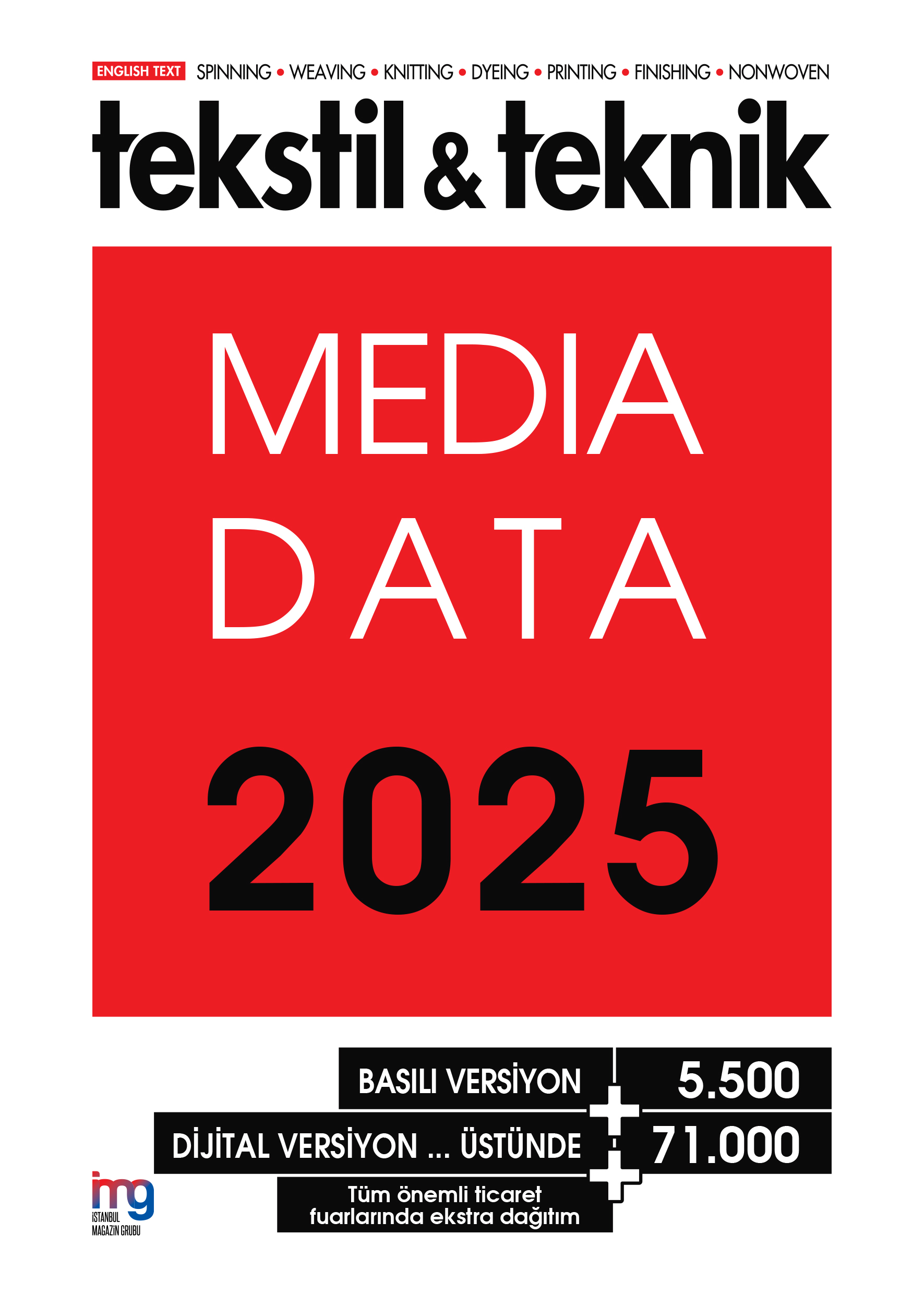Coating and lamination technologies play an indispensable role in meeting the ever-evolving needs of the textile industry and providing innovative solutions. With the advancement of technologies, these methods are opening new horizons for the sector by enhancing both the aesthetic and functional values of textile products.
Coating and lamination technologies offer innovative solutions in the textile sector, increasing the durability, aesthetics, and functionality of products. These technologies provide various features such as water resistance, breathability, heat resistance, and chemical resistance to textile products, allowing them to be used in a wide range of industries. Coated or laminated fabrics are used in many areas, from agricultural textiles to medical textiles, home textiles, and protective clothing. The performance and functional properties of fabrics produced by these methods vary depending on the coating material used, the technique applied, and the structure and properties of the textile surface.
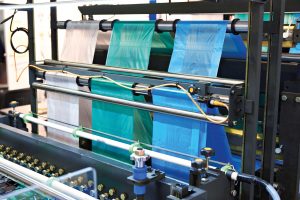
What is coating technology?
Coating is the process of applying a thin layer of a specific chemical or polymer material onto a textile surface. The coating process is performed to alter or enhance the physical or chemical properties of the fabric. For example, polyurethane, PVC, or silicone coatings are used to provide water resistance.
Coating production methods
- Spray Coating: The coating material is sprayed onto the fabric surface.
- Cylinder Coating: The material is evenly spread over the fabric using a cylinder.
- Dip Coating: The fabric is fully immersed in the coating material, and excess is removed to create a homogeneous layer.
- Knife Coating: A knife is used to spread the coating material over the fabric surface.
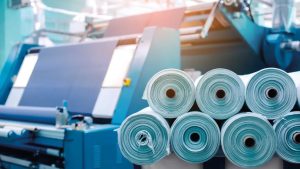
What is lamination technology?
Lamination is the process of bonding one or more textile layers together or applying a film, membrane, or other material onto a textile layer. Lamination is typically used to provide features such as waterproofing and breathability.
Lamination production methods
- Hot Melt Lamination: Layers are bonded using heated adhesives.
- Flame Lamination: Materials like polyurethane foam are heated with a flame source and bonded.
- Film Lamination: Films such as polyurethane or PTFE are bonded to the textile surface.
- Extrusion Lamination: Melted polymer material is bonded with the textile surface.
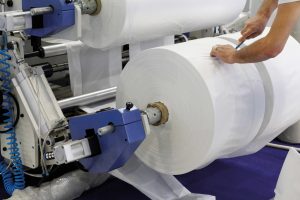
Coating and lamination applications in textiles
Coating and lamination technologies have a wide range of applications in textiles. The main application areas include:
- Protective Clothing: Fire-fighting gear, laboratory coats, and chemical protective clothing.
- Outdoor Products: Tents, sleeping bags, waterproof clothing.
- Medical Textiles: Waterproof and germ-proof patient sheets, sterile surgical drapes.
- Furniture and Decoration: Stain-resistant and waterproof upholstery fabrics.
- Automotive Industry: Sound-insulating upholstery and interior design materials.
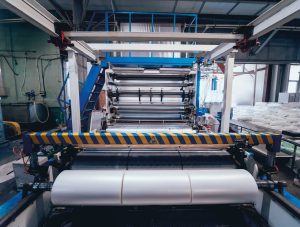
Benefits of coating and lamination technologies
- Functionality: Provides water resistance, breathability, heat resistance, and chemical resistance to products.
- Durability: Increases the lifespan of fabrics by protecting them against wear, tear, and environmental effects.
- Aesthetics: Offers shine, texture, and color options to products.
- Versatility: Serves various industries with a wide range of materials.
***
Kaplama ve laminasyon teknolojileri
Kaplama ve laminasyon teknolojileri, tekstil endüstrisinin sürekli gelişen ihtiyaçlarına cevap vermek ve yenilikçi çözümler sunmak için vazgeçilmez bir rol üstleniyor. Gelişen teknolojilerle birlikte bu yöntemler, tekstil ürünlerinin hem estetik, hem de işlevsel değerlerini artırarak sektöre yeni ufuklar açıyor.

Kaplama ve laminasyon teknolojileri, tekstil sektöründe yenilikçi çözümler sunarak ürünlerin dayanıklılığını, estetiğini ve fonksiyonelliğini artıran yöntemlerdir. Bu teknolojiler, tekstil ürünlerine su geçirmezlik, nefes alabilirlik, ısıya dayanıklılık, kimyasal direnç gibi özellikler kazandırarak farklı sektörlerde geniş bir kullanım alanı buluyor. Kaplama veya lamine kumaşların zirai tekstillerden tıbbi tekstillere, ev tekstillerinden koruyucu giysilere kadar pek çok kullanım alanı bulunuyor. Bu yöntemlerle üretilen kumaşların performans ve fonksiyonel özellikleri, kullanılan kaplama maddesine, uygulanan tekniğe ve tekstil yüzeyinin yapısına ve özelliklerine göre farklılıklar gösteriyor.
Kaplama teknolojisi nedir?
Kaplama, bir tekstil yüzeyine belirli bir kimyasal veya polimer maddenin ince bir tabaka halinde uygulanmasıdır. Kaplama işlemi, kumaşın fiziksel veya kimyasal özelliklerini değiştirmek ya da geliştirmek amacıyla yapılır. Örneğin, su geçirmezlik sağlamak için poliüretan, PVC veya silikon kaplama kullanılır.
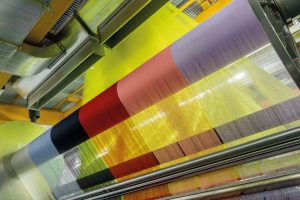
Kaplama üretim yöntemleri
- Sıçratma (Spray Coating): Kaplama malzemesi, kumaş yüzeyine püskürtülerek uygulanır.
- Silindir Kaplama: Malzeme, kumaşın üzerine silindir yardımıyla eşit bir şekilde dağıtılır.
- Daldırma Kaplama (Dip Coating): Kumaş, kaplama malzemesine tamamen daldırılır ve ardından fazlalık sıyrılarak homojen bir tabaka elde edilir.
- Bıçak Kaplama: Bir bıçak yardımıyla kaplama malzemesi, kumaş yüzeyine yayılır.
Laminasyon teknolojisi nedir?
Laminasyon, bir veya daha fazla tekstil tabakasının birbirine yapıştırılması ya da bir tekstil tabakasının üzerine bir film, membran veya başka bir malzemenin uygulanması işlemidir. Laminasyon genellikle su geçirmezlik ve nefes alabilirlik gibi özellikler sağlamak için kullanılır.

Laminasyon üretim yöntemleri
- Sıcak Eriyik Laminasyon: Isıtılmış yapıştırıcılar kullanılarak tabakalar birleştirilir.
- Flame Laminasyon: Poliüretan köpük gibi malzemeler, bir alev kaynağıyla ısıtılarak yapıştırılır.
- Film Laminasyonu: Poliüretan veya PTFE gibi filmler, tekstil yüzeyine yapıştırılır.
- Ekstrüzyon Laminasyonu: Eritilmiş polimer malzeme, tekstil yüzeyi ile birleştirilir.
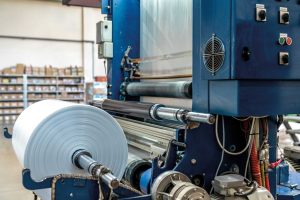
automated production of plastic bags.
Tekstilde kaplama ve laminasyon uygulamaları
Kaplama ve laminasyon teknolojileri, tekstilde çok geniş bir kullanım alanına sahiptir. Başlıca uygulama alanları şunlardır:
- Koruyucu Giysiler: Yangın söndürme kıyafetleri, laboratuvar önlükleri ve kimyasal koruyucu giysiler.
- Outdoor Ürünleri: Çadırlar, uyku tulumları, su geçirmez giysiler.
- Medikal Tekstiller: Su ve mikrop geçirmez hasta çarşafları, steril ameliyat örtüleri.
- Mobilya ve Dekorasyon: Leke tutmayan ve su geçirmez döşemelik kumaşlar.
- Otomotiv Sektörü: Ses yalıtımlı döşemeler ve iç tasarım malzemeleri.
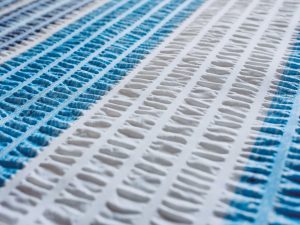
Kaplama ve laminasyon teknolojilerinin faydaları
- Fonksiyonellik: Ürünlere su geçirmezlik, nefes alabilirlik, ısıya dayanıklılık ve kimyasal direnç kazandırır.
- Dayanıklılık: Kumaşların aşınma, yırtılma ve çevresel etkilere karşı ömrünü uzatır.
- Estetik: Ürünlere parlaklık, doku ve renk seçenekleri sunar.
- Çok Yönlülük: Geniş bir malzeme yelpazesiyle farklı sektörlere hizmet eder.
